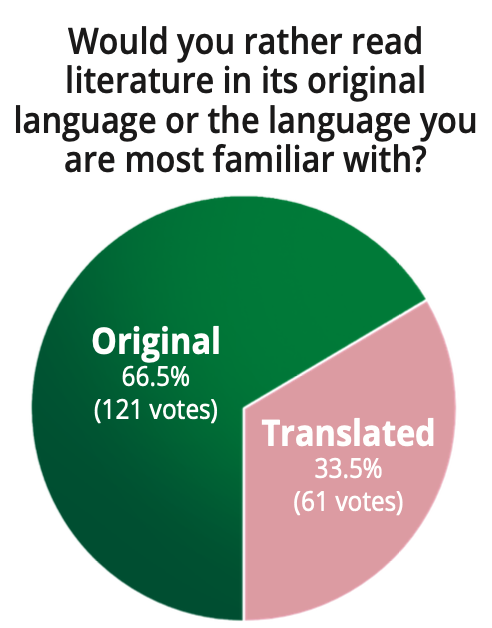Words aren’t enough: exploring limits of translation
Graphic illustration by Valerie Shu
The hazy diction of translated text is often left unnoticed and can stifle fluent and authentic communication or complete appreciation of secondary literary works.
May 8, 2023
“Tsundoku” is a Japanese word that describes the habit of ambitiously buying books but letting them pile up unread. Uniquely expressed only by this language, the word holds cultural Japanese connotations that are often unable to be precisely translated to other languages. Likewise are multitudes of untranslatable words, isolated by linguistic and semantic barriers among the 7,106 living languages today. The hazy diction of translated text is often left unnoticed and can stifle fluent and authentic communication or complete appreciation of secondary literary works.
“A huge fraction of how text communicates is context,” UC Davis English and Comparative Literature professor Joshua Clover said. “As soon as you translate, you’re moving the word or phrase into a new context. As soon as the context changes, the connotation gets really difficult to preserve.”
Attempting to understand every language is undoubtedly impossible, making translated literature unavoidable and crucial to education. Dramatic differences in cultures and tones of each language pose challenges to both translators and readers alike.
Every word holds a unique definition, connotation, allusion and aesthetic value in its original language — when translated, at least one of these formal features must be sacrificed to preserve another. Translators must choose what to sacrifice, while readers must discern what was sacrificed. Priorities vary in different types of text; informational text such as medical dictionaries or cookbooks should have accurate definitions, while artistic literature such as poetry often aims to preserve connotation and allusion.
Of the most common factors that interrupt precisely equivalent translations are cultural, historical, linguistic and environmental differences. Variance among these factors in every language, as well as language evolvement, creates varying connotations and allusions for each uniquely-crafted word or phrase.
“Language is the backbone of a culture,” sophomore Athreya Iyer said. “Language not only serves as a source of pride for cultures, but it also serves as a way through which cultural folktales are passed down through generations.”
Language is culture and culture is language; the homology between the two creates distortion in one when the other is removed. Chinese idioms strongly represent this concept; frequently seen in poems, novels and even daily vocabulary, they originate from classical Chinese fables — each idiom retells its respective fable in often four concise characters. “井底之蛙” (jǐng dǐ zhī wā) is a well-known idiom used to criticize someone with a closed mind. Direct translations render this phrase as “frog in the bottom of a well,” disregarding all meaning and context. By merely examining its definition and translation, one would also be unaware of the fable in which the idiom emerged from — a large aspect of its aesthetic value. Sacrificing any one of these factors — true meaning, cultural connotation or length — may debilitate the original beauty and message of Chinese literature.
“Untranslatability often comes from deep-seated cultural meaning that is understood by everybody in the culture where it originates, but otherwise has to be explained at some length in a paraphrase,” Stanford University Comparative Literature Professor Roland Greene said.
Another example of a culture-specific word is the German word “schadenfreude,” which is used to describe the feeling of pleasure at someone else’s misfortune. Often associated with the English word “revenge,” “schadenfreude” carries a much more complex emotion and connotation, indescribable with English words, that ties into both the roots of the word and German culture. German philosophers from centuries ago wrote extensively about human suffering and the symptoms of schadenfreude; thus, Germany’s culture and language now carry many explorations of human nature and emotion.
“One may argue that ‘schadenfreude’ does, in fact, have an English translation — ‘pleasure at someone else’s misfortune,’” said Lingzi Zhuang, University of Toronto Mississauga assistant professor of linguistics. “The translation is actually very accurate as far as meaning is concerned, but we lose the conciseness and simplicity in form that a single word might offer. So if you consider a highly form-dependent genre, like poetry, you could imagine a translator of German feeling that ‘schadenfreude’ is ‘untranslatable,’ despite the existence of its five-word English translation.”
Direct translations may also erase historical context. “Whakapapa,” a word in Māori, most commonly spoken in New Zealand, encompasses the idea that people are connected to their ancestors and the land they come from. In Māori history, natives have used whakapapa to trace their ancestral connections, allowing them to assert their rights and claims to land. This word is not only deeply rooted in the history of New Zealand, but is also an important part of Maori identity and culture.
“Reading a piece in its original language allows me to learn more about the cultural and historical aspects that might show through the text,” sophomore Saarang Mallipeddi said.
Linguistic differences can also challenge precise translations between languages; one example can be shown by comparing possession in English and French. The English language uses possessive nouns, while French speakers use passive voice to show possession. For example, an English speaker may say, “the cat’s collar,” while a French speaker may say, “le collier du chat,” which directly translates to “the collar of the cat.” The lack of possessive contractions in French makes French text almost always longer than English text. French possession represents just one of many language-specific grammatical rules that pose challenges to translators.
Environmental factors may also contribute to the lack of direct translations between languages. The vocabulary of Inuktitut — a language most commonly spoken throughout colder countries such as northern Alaska, Canada and Greenland — encompasses many words used to describe different types of snow. A few examples include: “ᖃᓂᖅ” (qanik), meaning fresh, falling snow; “ᐊᐳᑦ” (aput), meaning soft, powdery snow; and “ᐳᒃᑲᖅ” (pukak), meaning snow with a layer of ice on top. Due to frequent heavy snowfall in Inuit regions, natives have developed a vast knowledge of snow and ice, which is reflected in their language. Other languages are uniquely influenced by their own environmental factors, yet none can convey direct translations for Inuit snow vocabulary, as these words are only central to Inuit daily life.
“Of course, it’s possible for the English language to create words with the exact same denotations and connotations as words from other languages,” Zhuang said. “But the spread of new words from a niche creation into everyday use is very much a culturally contingent matter — oftentimes there won’t be enough people using the word for it to be embedded into the common English vocabulary.”
A commonly seen phenomenon is words with the same denotation — or dictionary definition — yet different connotations. The word “scheme,” defined by the Merriam Webster dictionary as “a plan or program of action,” is used in both American English and British English. Although this word carries the same denotation in both the U.S. and the U.K., its connotations differ. In the U.S., “scheme” carries a vaguely negative connotation whereas it doesn’t in the U.K. This word could be used to describe a new government program in the U.K., but, if used in the U.S., would be portraying the program in a negative light. Ambiguity in connotations that are understood only by native speakers may hinder fluent and accurate communication — translators must be proficient in not only languages, but also various factors of context, to construct precise translations.
To mitigate the inevitable impact of translation in literary works, some languages have adopted words or phrases from others to preserve its linguistic and semantic authenticity. “Déjà vu,” a familiar French term used to describe the feeling of having already experienced a current situation, is frequently used across different cultures. By using the French term, people are able to evoke the term’s concept without having to lose connotation or conciseness.
“Nothing has a perfect translation,” Clover said. “It’s more important to feel the experience that the writer and translator are both constructing, rather than focusing on understanding everything. The experience encapsulates both meaning and emotion.”
Languages are ever-changing; they inevitably evolve through time and regions.
“One way languages evolve is by people’s misusing of words,” Clover said. “Someone will misuse a word, and their peers will begin to catch on to the incorrect definition. This misuse will spread and people will decide to adopt this new, incorrect definition.”
Because literary works are published in a limited number of languages due to accessibility, translations are thus valuable for providing analysis, interpretation and context for education. Nonetheless, due to the loss of authenticity, translations may not, in actuality, precisely convey the same meaning as original pieces.
“When choosing literature to teach, our department tries to choose the most renowned and well-known translations,” World Literature teacher Maggie Welsh said. “We also make sure to acknowledge differences in translations, especially when it’s important in discerning the author’s tone.”
To address this phenomenon, many of Lynbrook’s literature teachers incorporate short lessons and research projects before beginning reading units to immerse students into the culture and historical context of the literary pieces. This allows for more efficient analysis and helps students better understand the author’s intent and message behind particular details in the book.
“Having prior knowledge of a book or poem’s cultural and historical backgrounds really helps me fully understand and connect with the text,” junior Angela Pei said.
Although there is importance to understanding the context of a text, literature should be appreciated by the experience that authors and translators construct, rather than small imperfections of translations. Especially when translating artistic literature, translators focus on preserving the emotions that original authors intend for readers to experience, whether that be a sentence that makes readers smile or a plot that evokes shock.
“All translations are imperfect,” Greene said. “We must embrace this imperfection and make the translation a part of the art.”






























































